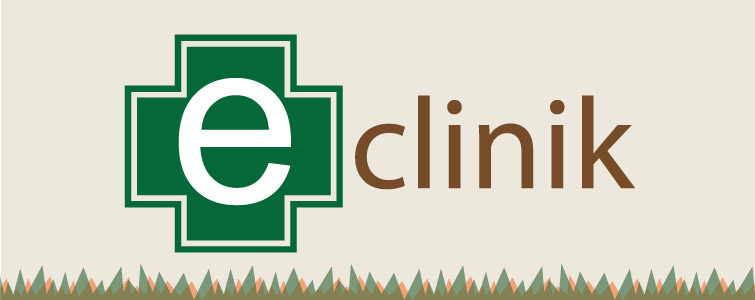Lawns and Landscapes
Increasingly, floriculture and lawn managers worldwide are adopting Integrated Termite Management (ITM) principles and practices. Environment-conscious consumers are increasingly demanding eco-friendly or organically managed lawns, providing a public relation and premium marketing advantage to lawn owners who adopt ITM. In Indian context, with their well-known economic role of floriculture in urban relevance, we deliberate herein a quite neglected sector i.e. plant protection science in lawns and landscaping.
Typical termite damage in patches - lawn
Like any other plants, lawns also are subjected to biotic stresses inclusive of the insect and non insect pests. Unfortunately, in Indian conditions, pest management sector is not well organized; associated available knowledge is scanty and. This article attempts to offer a modest fillip to this gap, and outlines the few guidelines pertinent to lawn in particular for termites. Descriptions herein, are suggestive in nature, and arrived at large by common scientific analyses and observations, rather than direct scientific investigations. Therefore, disclaimer is obvious: any loss incurred adopting any practice are at the growers’ risk, and with scientific good faith the article is published for common use. The specific pesticide products mentioned are for informational purposes only and do not indicate an endorsement by the author or the institute. However, we opine that products of different brands of the same active ingredient may vary in their efficacy and phytotoxicity influencing the lawn turf/grasses.
Plant Health Management in Lawns
| Problems: | Symptoms: | Measures to be taken: |
| Termites | Yellow circular patches | Appropriate termiticides, follow ITM (integrated termite management) |
| Dog urine | Yellow patch | Replanting in circular manner. |
| Leafhoppers | Suck the juice from grass blades causing stripped white, then yellow and finally brown leaves. | Spray Dimethoate 2 ml/l |
| Nematodes | Affect the roots, lawn takes a bleached out appearance | Apply Furadan 40 g /sq metre |
| Magnesium and iron deficiency | Grass turns yellow with the deficiency of magnesium and iron | Iron: Spray Ferrous sulphate 25 g dissolved in 10 litres of water per 100 sq. metre. |
| Magnesium: Spray Magnesium sulphate 100 g in 10 litres of water per 100 sq. metre. | ||
| Weather | Grass browns especially in hot weather | Drench the lawn in injured areas to leach excess fertilizers deep into the soil. |
| Various | Light sprinkling encourages shallow roots. Over watering causes diseases | Water the lawn to wet the soil about10 to 15 cm depth. |
| Weeds | Weed growth competitive to flowering plants and in lawn. Best example is Parthenium | Appropriate weedicides (not discussed herein) |
Reduced chemical use: Chemicals must be used as the last resort of pest-control. Consult experts for right time, dose and method of application. Pesticide rotation is advocated. Pesticides with low-dose requirements, with safer and soft chemistry, are ought to be used. One should be careful in verifying the population shifts/trends in chemical treated field. Remember, the landscapes should not be converted to chemosphere by indiscriminate pesticidal-application.
Selective & specific use
- Seed or plant propagule treatment: Insecticides of proper label claim is quite effective, economic and ecofriendly.
-
Pesticides compatibility: Whenever required combination of pesticides, compatibility chart is to be followed.
Basic precautions in pesticides:
Purchase the required quantities; avoid purchasing leaking/loose/unsealed containers, read definitely the labels for authenticity. If storage required, store away from children, domestic animals/pets, never store them along with food/feed items, don’t expose to sunlight or rain, don’t store weedicides along with other pesticides. While handling, avoid carrying bulk-pesticides on head, shoulders or backs. While preparing solution, use clean water, consult experts for proper dose, rate and timing, use proper clothing, gloves, specs etc.
Label claim is a relevant legal issue to be given proper attention while suggesting recommendations to lawns.
Precautions in chemical control
-
Use chemicals as the last resort.
-
Follow pesticide rotation.
-
Adopt proper delivery system.
-
Follow proper PPE (Plant protection equipments)
-
Clothing – wear long sleeves and pants (not shorts), rubber shoes, rubber, latex or nitryl (NOT cloth or leather) gloves
-
Goggles –with covered vents not "sunglasses."
-
Respirator – Use a "gas mask" (cartridge type), not a dust mask.
-
Read the label before use; use pesticides for their recommended use only, and use the recommended amount.
-
Keep pesticides in their original containers in a safe place. Essentially keep children, pets, and other adults out of the area.
-
Spray only on still (not breezy) days.
-
Never smoke, drink, or eat while spraying.
-
Post-spraying -
- Clean all equipment, gloves, and goggles
- Wash spraying clothes in separately
- Shower and shampoo as soon as possible.
Habitat management
-
Need-based removal and destruction of remnants, stubbles etc are done around the lawn.
-
Live-trap technology for termites: Like Pusa-push-pull technology, maize or any suitable stubbles can be left at the border or specified areas, that attracts termites as live-trap which later can be controlled/killed by suitable chemicals or biopesticides.
-
Other non-chemical control methods
-
Trappings: Light traps for termites is not valid.
To get maximum benefits from ITM in lawns use these guideline in combination with prescribed recommendations in the latest UC IPM Package Guidelines for Horticulture and Ornamental plants and Nurseries. They are available online (www.ipm.ucdavis.edu). Our first and last line of recommendation – Follow Good Floricultural Practices vis-à-vis pest management, which can help your trade.
Termite infestation in a lawn - checking the degree of infestation
Total Visit: 02014994


